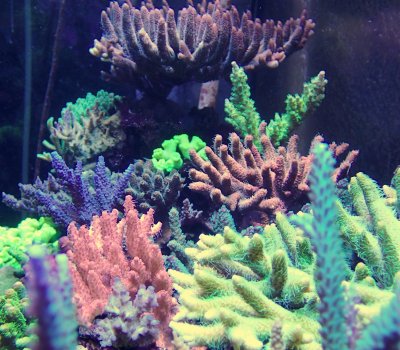Interesting, I just came across this, can't believe I never found this before. And it was even conducted in 1980, how about that. So this and Julian so far, if we're sticking to observations based on strontium specifically and corals. Though without more data from Julian we can't entirely call his comments research, though I can't disqualify it because I've not seen his words on it, only yours.
Effect of Increased Strontium Concentrations
Swart (1980) manipulated (raised) strontium concentrations and observed coral growth rates. Results were mixed. When the strontium level was doubled (presumed to be ~25 mg/l), coral growth increased in only ~38% of the cases. However, when strontium was raised to ten times that of natural seawater (~130 mg/l?), growth rates increased in 63% of the trials. Test kits are available for checking strontium concentrations. See Figure X.
http://www.advancedaquarist.com/2015/10/corals
Can the same be said about raising calcium to 10x natural levels? (if corals truly "mistake" strontium for calcium, then there should be similar results no?)
Effect of Increased Strontium Concentrations
Swart (1980) manipulated (raised) strontium concentrations and observed coral growth rates. Results were mixed. When the strontium level was doubled (presumed to be ~25 mg/l), coral growth increased in only ~38% of the cases. However, when strontium was raised to ten times that of natural seawater (~130 mg/l?), growth rates increased in 63% of the trials. Test kits are available for checking strontium concentrations. See Figure X.
http://www.advancedaquarist.com/2015/10/corals
Can the same be said about raising calcium to 10x natural levels? (if corals truly "mistake" strontium for calcium, then there should be similar results no?)




















